
Dear Friends,
She was a teacher, yet she preferred to call herself a learner for, to quote her own words: “My teaching classes are learning classes; when I teach, I learn a lot.” She considered life to be a never-ending learning process; she wanted to know and learn not to attain any particular specialization but for the joy of learning. It was her passion to learn new languages that made her the most acclaimed linguist of Sri Aurobindo Ashram, Pondicherry. If in a room there were ten nationals from ten different countries, she could converse with each of them in their respective mother-tongue with utmost ease. And with the same ease she could speak in Bengali, Tamil, Hindi and Punjabi, thus making it difficult for an outsider or a casual visitor to ascertain which part of India did she come from. Besides being a prolific learner, she also had a delightful sense of humour. Her witty conversations would rejuvenate a crestfallen heart just as a lamp illumines a room. Such was Lata Jauhar — a real marvel!
Lata was born as Snehlata on 10 April 1932. She was the eldest daughter of Surendranath and Dayawati Jauhar. Surendranath (13 August 1903—2 September 1986) was a freedom fighter and self-made entrepreneur who had established the reputed firm ‘S. N. Sunderson & Company’. In December 1939, during the course of an all-India tour, he arrived at Pondicherry with his eldest son Anil and friend Dr. Indra Sen. On being informed that Sri Aurobindo had His ashram at Pondicherry, Surendranath and Dr. Indra Sen went to pay a visit. When they arrived at the Ashram main building, they were told that Sri Aurobindo’s Darshan can only be had on certain specific days. The fact that the Ashram did not have any hermits wearing ochre robes had roused Surendranath’s interest and curiosity as it was a new experience for him. He was also told that a French lady, known as ‘the Mother’, was the presiding deity of the Ashram and that Her Darshan could be had in the evening when She appeared for collective meditation at the Meditation Hall. He joined the queue of followers who were going to participate in the collective meditation and subsequently had the Mother’s Darshan. The very sight of the Mother had such an overwhelming impact on him that he lost his ‘heart and won the soul and the real life’ and it was the ‘supreme discovery’ of his life. He re-visited Pondicherry for the second time in February 1940 and had the dual Darshan of Sri Aurobindo and the Mother on 21 February. He again visited Pondicherry in December 1942 and was accompanied by his wife and eldest daughter, Snehlata.
Snehlata had her early education at Lahore (now in Pakistan) where she was a student of Sir Gangaram Hindu Girls High School. In December 1942, when she visited her parents during her vacations, she came to know that they were preparing to go to Pondicherry. She told them: “You can’t go away when I come. You have to take me.” As she was determined not to stay at home without her parents, it was decided to take her to Pondicherry. In those days, prior permission was necessary to enter the main building of Sri Aurobindo Ashram. As no such permission was obtained for Snehlata, she was left at the Ashram main gate while her parents stepped inside the Ashram premises to have the Mother’s Darshan. After a while, Snehlata — then aged ten — began to shout and cry as she too wanted to enter into the Ashram premises. Some passers-by inquired what the matter was. Her cries were noticed by Kantilal Purani (younger brother of Champaklal) who took her inside and put her in the queue of devotees. She would later recall in one of her conversations that during her first visit to Pondicherry, on one occasion, she had gone to the Mother with a plate full of jasmine (renamed ‘Aspiration’ by the Mother) flowers.
Snehlata’s next visit to Pondicherry was in 1944. She arrived at the Ashram on 1 August 1944. ‘My Ashram life started on 1 August 1944. That was my second visit and I stayed here. I didn’t go back’, she had recounted to the present author during the course of an interview. From August 1944 to January 1945, she stayed with her mother and siblings in the ground-floor of the building which later came to be known as ‘Ira’s Boarding’. To the present author she had said: “I came here because I wanted to come but I don’t know why. Mother told us once when we were small children that you people came when I called you. Now those who are coming have been brought by their parents and it is quite a different thing. So She called us not physically. That means She had seen that we were the persons fit for coming in the Ashram.”
Although her name was Snehlata, in the Ashram community she was known as Lata. “There were many ‘Latas’ in the Ashram”, she had once told the present author, “We had Bonolata [Mona Sarkar’s sister], Premalata, etc. But they were called and known as ‘Bono’ and ‘Prema’ as people forgot the last half of their names. In my case, the first half of my name was forgotten. So I became ‘Lata’.”
The Mother would sometimes rent a double-storeyed house known as ‘Maison Dubreuil’ situated at 3, Law de Lauriston Street for providing accommodation to visitors. On 1 April 1944, this building was purchased by Surendranath Jauhar in the name of Sri Aurobindo and offered to the Mother. Following the Mother’s instruction, the entire building was repaired and additional constructions were made. It was here that the Mother started a boarding-house named ‘Dortoir’ for young children. Separate arrangements were made for the lodging of boys and girls at the ground-floor and first-floor of Dortoir respectively. It was officially inaugurated on 15 January 1945 with five girls — Lata, Tara, Chitra (Surendranath Jauhar’s daughters), Aruna and Kokila and four boys — Narendra, Jitendra (Surendranath’s sons), Arun Kumar and Nirakar. While two Parsi ladies named Gul-ben and Shirin-ben looked after the girls, a South-Indian lady named Chellamma who knew Hindi was in charge of the boys and also of the kitchen.
Lata was the first boarder of Dortoir as she had moved in two days before its official inauguration. It so happened that in the morning of 13 January 1945, Lata’s mother Dayawati had served her bread and milk for breakfast. Like most young children, Lata refused to have milk. Dayawati insisted but Lata refused to drink it and got up to leave. Dayawati warned her that if she did not drink milk she would not be allowed to enter the house. Although this warning had made Lata somewhat nervous, she walked out of the house, went straightaway to the Mother and told Her what had happened. The Mother, who was the embodiment of infinite affection, sent Lata to stay in Dortoir immediately. Thus, she started to stay at Dortoir before it was opened. On that very day, in the evening, the Mother sent a basket full of fruits, chocolates and biscuits exclusively for her. To the present author, Lata would recall: “I thought I was really spoilt because at home we didn’t get so much attention. All the things I liked I got on that day. At that time again I had this feeling that this is my home. And She is my mother. It was something which gave me a lot of joy.”
Lata did not know French at the time she joined the Ashram School as a student. She attended her classes without having any knowledge of French. So, the Mother asked Kanak Ganguli, younger brother of Manoranjan Ganguli, to teach her French. But this arrangement was not quite fruitful, because — to quote Lata’s own words: “Kanak-da was very fond of children and he used to play with them. And I learnt nothing!” Afterwards she began to learn French from Monsieur Benjamin and Shanti Doshi.
During her free periods, Lata used to work with Ravindra in the Ashram main building. He gave her the opportunity not only to serve the Mother but Sri Aurobindo as well. Both the Mother and Sri Aurobindo took a glass of carrot juice every day. In those days, carrots were not easily available; they were transported from Bangalore to Pondicherry once a week. Since there were no refrigerators flat earthen pots were filled with moist mud and sand and the carrots were kept beneath. Lata would take out two carrots every day from the pots, wash them nicely, slice them and after grinding them on a stone squeeze out the juice from a muslin cloth and fill up two small glasses: one for Sri Aurobindo and the other for the Mother. She also used to peel and slice fruits like oranges, seedless grapes and sapodilla, arrange them in two bowls for the Mother and Sri Aurobindo and carry them in a tray to the Mother. She used to wait in the passage between the Mother’s apartments and Sri Aurobindo’s. The Mother would pass by, look at the bowls and remark: “You are a very good girl.” On weekends, she would churn milk on a hand-machine for almost an hour to prepare milk-cream and butter for the Mother and Sri Aurobindo. This last work continued as long as Sri Aurobindo was physically present. Apart from such services, she filled up fruit bags of the inmates with tomatoes, lime and papaya and kept them ready for distribution. On Darshan days she worked at the counter of the Dining Room to serve rice or vegetables and also helped to wash and wipe the dishes and bowls used in the Dining Room.
The Mother gave utmost important to physical culture in the Ashram. With the arrival of Pranab Kumar Bhattacharya in the Ashram in 1945, the Department of Physical Education took shape. Prior to that, there were no uniforms for sports. Girls wore salwar-kameez and played games like basketball. When shorts were introduced, Lata borrowed her younger sister Tara’s shorts and got herself photographed as she wanted to send it to her parents in Delhi. But before sending the photograph, she showed it to the Mother. The Mother asked: “Is it for me?” Lata replied: “Mother, you can take it.” The Mother took her photograph and it was duly published in the first issue of the Bulletin of Sri Aurobindo International Centre of Education.

The education system of the Sri Aurobindo International Centre of Education was such that it brought out the best qualities in every pupil as it focused on the development of the pupil’s intellectual, emotional, aesthetic, ethical and spiritual faculties. That is why, apart from her studies, Lata took a keen interest in playing the sitar which she learnt from Sunil Bhattacharya, the brilliant music composer of the Ashram whose compositions were praised lavishly by the Mother. And in due course of time, she blossomed into an accomplished sitarist.
The Mother had once written that work done in true spirit was meditation. In the Integral Yoga, work is looked upon as the finest means of serving the Divine. And it was through work that Lata would offer the prayer of her body and soul to the Divine. We have already seen how she worked to serve Sri Aurobindo and the Mother when she was still in her teens. Once, it was announced in a notice that those who were interested in extra work between 1 and 2 in the afternoon could give their names to Udar Pinto or Ravindra. Lata gave her name and started working in Harpagon. Rolls of plastic were purchased with which Lata started to make covers for books. And she continued with this work for a number of years. She has recounted that all the books in the Library of the Physical Education Department were covered by her. During competitions of athletics and gymnastics organized by the Physical Education Department, Udar Pinto would record the results while Lata and the other members in his team helped him to note the results, calculate the points, get the average, ascertain the first, second and third positions and display the results on the notice board. On one occasion, she had worked almost through the night on a Saturday at the Ashram Press in different sections. “Fun was work and work was fun”, she had remarked while recalling those days of the bygone era.
Lata had once said: “I never wanted to be a teacher — I didn’t like school.” But the irony of fate was such that she went on to become one of the most loved and respected teachers of Sri Aurobindo International Centre of Education. It so happened that in 1958, Kumud, her friend who was teaching mathematics in the Centre of Education, wanted to quit teaching. As there were two more months for the academic year to end, she requested Lata to teach her students for the remaining period. Lata was initially reluctant but to help her friend she agreed and took her classes. After the end of the term, Pavitra, the Director of the Centre of Education, told Lata: “You are doing good. Continue.” “I was flattered”, recounted Lata, “So I continued.” Afterwards, she began to teach Science as well. Following the advice of Tehmi, a legendary teacher of English in the Sri Aurobindo International Centre of Education who was Lata’s teacher as well, she started taking classes on English.
An interesting incident deserves to be mentioned here. Tehmi, an ardent admirer of Sri Aurobindo’s Savitri, would suggest to her students that all the good passages of Savitri should be learnt by heart. Lata, who was bestowed with a phenomenal memory, had memorized the whole of the first Canto of Savitri. When Tehmi came to know of this accomplishment, she found it difficult to believe and asked Lata to recite it in the class. Lata stood up and started reciting from Savitri. She continued with her recitation until Tehmi said: “It’s okay, now you can sit.” By that time, she had recited more than half of the first Canto of Savitri.
One day in the early 1960s, Lata’s younger sister Tara read an advertisement in the newspaper which announced that the French Government was giving scholarship for the first time for a course on Teachers’ Training at Sorbonne University, Paris. Surendranath Jauhar insisted that Lata should apply for this scholarship. Lata was not quite keen to apply initially because she was not a French teacher but she thought of applying when Surendranath pointed out that in India there were not many French teachers. But she wanted the Mother’s approval first as she did not want to go without the Mother’s sanction. At that time, the Mother was indisposed and was not meeting anyone. So, through Pranab Kumar Bhattacharya, Lata conveyed her message to the Mother. The Mother answered: “It would be good if someone has this training in France.” Now that the Mother’s permission had arrived and as there was very little time left, Pavitra and Kireet Joshi (who was the Registrar of Sri Aurobindo International Centre of Education at that time) worked day and night to prepare Lata’s certificates and prepared a big file mentioning her accomplishments in studies, sports and fine arts. These papers were duly sent to New Delhi and after a few months the letter of interview arrived. As the date of the interview was only three days away and it took three days to travel from Pondicherry to New Delhi, Lata — on her father’s advice — took a flight and arrived at Delhi a day before the interview. With the Mother’s Prayers and Meditations in her hand as a support, she appeared for the interview and was selected for the scholarship along with nine other applicants. She flew to Paris where she was received by Francoise, the Mother’s grand-daughter (known as Pournaprema in the Ashram community) in whose flat Lata stayed for some days. Afterwards she shifted to a flat which she had taken on rent.
The Teacher’s Training Course at Sorbonne involved a direct method of teaching French to foreigners in a foreign country and the scholarship was for six months. Lata got an extension of three more months during her stay in France and completed her training course successfully. Then she went to Germany where she stayed for some months and did a course of dramatics in a drama school. It also brushed up her German which she had started to learn at Pondicherry from Fritz Winkelstroeter alias Medhananda (1908—1994; a German scholar who had joined Sri Aurobindo Ashram in 1952 and was in charge of Sri Aurobindo Library and taught History of Religions at Sri Aurobindo International Centre of Education). During her sojourn in the West, she had given a few sitar recitals as well.
Having spent a little less than two years in France and Germany, Lata returned to Sri Aurobindo Ashram. When she went to the meet the Mother, She looked at Lata and said twice: “Ca t’a fait beaucoup de bien.” (“It did you a lot of good.”) She would again travel to the West in the following decades and visit countries like Italy, Greece, Egypt, United Arab Emirates, South Africa, Turkey and Russia to name a few.
Soon after her return from France, Lata began to learn Italian from Alberto Grassi, an Italian engineer who had joined the Ashram in the 1960s and was renamed Nata by the Mother. She also assisted him with his correspondence with Italian devotees and helped and guided Italian visitors during their visits to the Ashram. When there arose an opportunity to teach Italian in the Sri Aurobindo International Centre of Education, Subir Kanta Gupta, the younger son of Nolini Kanta Gupta, volunteered to render his services. But Nata said: “I think Lata should teach Italian.” Thus, Lata began to teach Italian at the Centre of Education where she also taught French, German and later Spanish and Portuguese after learning them. Once, when she was asked by her father whether she was learning German to travel to the West, she had replied that she was learning for the sake of learning. She had once said that she knew thirteen languages and wanted to learn as many languages as Sri Aurobindo knew. The eagerness to learn and master a language not previously known to her remained with her throughout her life. When she was in her late seventies, she began to learn Russian. Learning, for her, was a journey and not a destination.
Apart from teaching Mathematics, Science, English and foreign languages at the Higher Course of Sri Aurobindo International Centre of Education, Lata also worked in the Batik Section of the Ashram for three decades. She continued to teach till her very last day — literally.
On 10 April 1967, when on the occasion of her thirty-fifth birthday, Lata had gone to the Mother to seek Her blessings, her younger sister Tara had accompanied her with a Rolleiflex camera which she wanted to start using by clicking the Mother’s photographs. On that day, with the Mother’s permission, Tara had taken ten photographs of Lata with the Mother, each capturing a separate action. Champaklal, the Mother’s servitor, had remarked after seeing the photographs that Lata was the only person who had been shot in so many positions with the Mother.










The present author had met Lata Jauhar for the first time in March 2009 when he was working on his book Sri Aurobindo As We Saw Him for which he had gone to interview her in her room in the Guest House. This was the beginning of a memorable contact with her. At times the author would meet her in the streets near Sri Aurobindo Ashram when she would be returning to her residence ‘Daya Niwas’ after collecting her meal. He would quietly walk to her, open his umbrella above her head to protect her head from the scorching heat and ask her: “May I have the honour to carry your bag?” And she would turn, look with joyful eyes and exclaim: “When did you come?” So good to see you!” Her warmth was heart-captivating. They would walk on their way to ‘Daya Niwas’ and then the author would bid her adieu. Sometimes they would meet near the Ashram main building where Lata would be surrounded by a group of foreign devotees and she would introduce the present author to them and inform them about the activities he was associated with. But the one place where they met often was at the residence of Suprabha Nahar where Lata would pay a visit in the evening. It was a sight to see the two old friends chatting about the recent events which had taken place in the Ashram and in the town. Once, Lata narrated that Suprabha Nahar had given her a book on Abhay Singh Nahar to gift it to an interested reader. Lata duly gifted this book to one of her friends but after a couple of weeks the same book came back to her as a gift after changing many hands. And she exclaimed: “It was me who had given that book and it came back to me after completing a circle!” She would lovingly address Suprabha as ‘Motu’ (fat) although the latter was anything but plump. Nobody remembered how this name originated but it stuck on for good. The present author remembers that one evening in November 2018, Lata — at the time of taking leave of Suprabha — had said: “I am memorizing Sri Aurobindo’s poems as I will be teaching His poetry to my students in the next term.” “Which ones have you chosen?” inquired Suprabha. “The longer ones like ‘Who’”, Lata replied. “You are unparalleled!” Suprabha said with a smile of appreciation. And after Lata left, Suprabha told the present author: “Her memory and energy fascinates me.” When Suprabha underwent a hip surgery in March 2019 and was confined to her apartments for the next several months, Lata would visit her to spend time with her. Sometimes she brought Urmila, another friend of hers and Suprabha’s, with her. Incidentally, Lata was supposed to have tea with Suprabha in the evening of 7 October 2020 but this particular rendezvous was not destined to take place as Suprabha quite suddenly left her body on that very afternoon.
On 1 January 2015, while on his way back after attending the morning meditation at the Samadhi, the author met Lata near the Ashram Post Office. He tripped on something but managed to maintain his balance and avoided a fall. With a motherly concern, Lata said to him: “Be careful. You were about to fall.” “If I don’t fall,” the author replied, “then how will I rise?” “Ah! That’s a nice perspective!” she said with a smile. When she was invited to the author’s wedding, she wrote to him on 10 February 2016: “What a surprise. All the best for your new life.” And when in December 2016, when Lata was introduced to the author’s wife, she asked the latter with a twinkle in her eyes: “Is he a good boy?”
In December 2019, Lata had hurt her back due to an accidental fall. She was admitted to the Ashram Nursing Home where she stayed for some days. When the present author met her in February 2020 near the Rosary Gate of the Ashram main building, she had regained her health but needed some support while walking. But she was as cheerful as ever. They talked for about fifteen minutes before she took leave of him. That was the last time they had met although they remained in touch through emails and whatsapp.
In the morning of 11 October 2021, Monday, Lata attended to all her duties and visited the Ashram main building. Then she took her class with her students as usual. In the afternoon she had lunch with her younger sister Chitra whose birthday was on the same day. She feasted on Punjabi parathas which she was fond of and also had chocolates. Then she sat on the sofa to rest. Suddenly she felt uneasy, put her hand on her heart and breathed her last. Quietly and peacefully she moved on to the other world just as one tip-toes from one room to another. That day in the evening when some of her friends went to pay her last respects to her, they found her face very fresh and deeply indrawn.
Thus ended the journey of a beautiful soul whom accidents could not overwhelm nor could age overpower. Lata Jauhar was like a torch with the fire of positivity and optimism aflame all the time. She was a perfect example of how life should be and how should it be lived.
With warm regards,
Anurag Banerjee
Founder,
Overman Foundation.

The Mother with Lata Jauhar, Vidyavrat, Vishwanath Lahiri, Dyuman, Champaklal and P. Counouma on 11 October 1954 (Lakshmi Puja).

The Mother with Lata Jauhar in Her apartments on 29 February 1968.

Same as above.




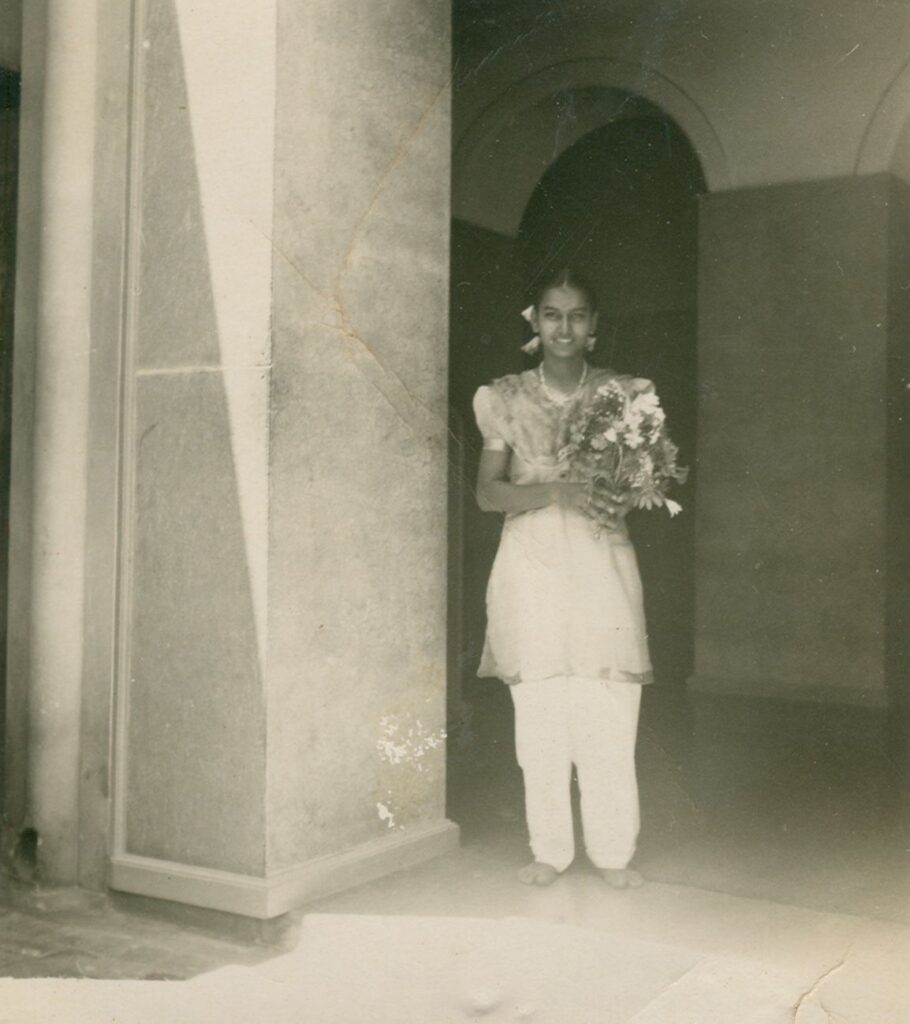


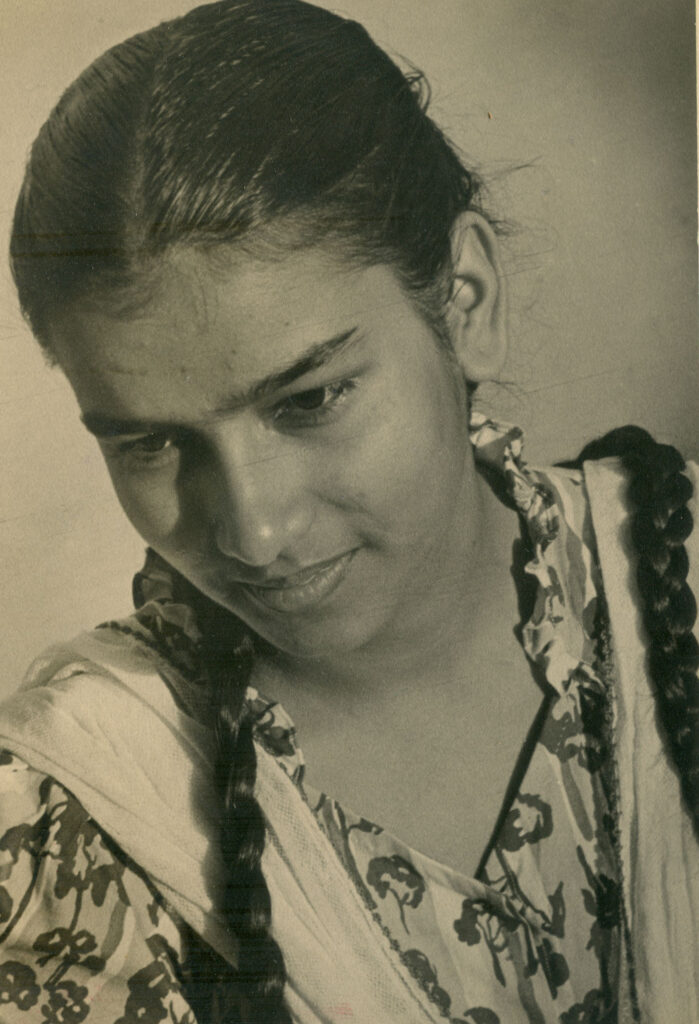


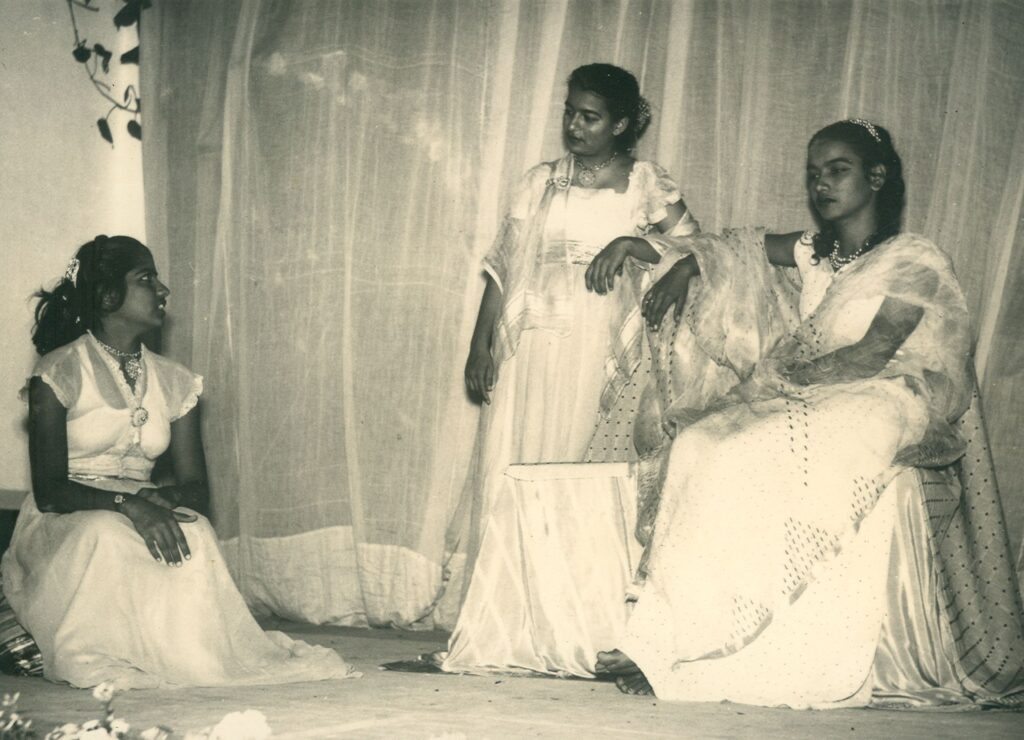


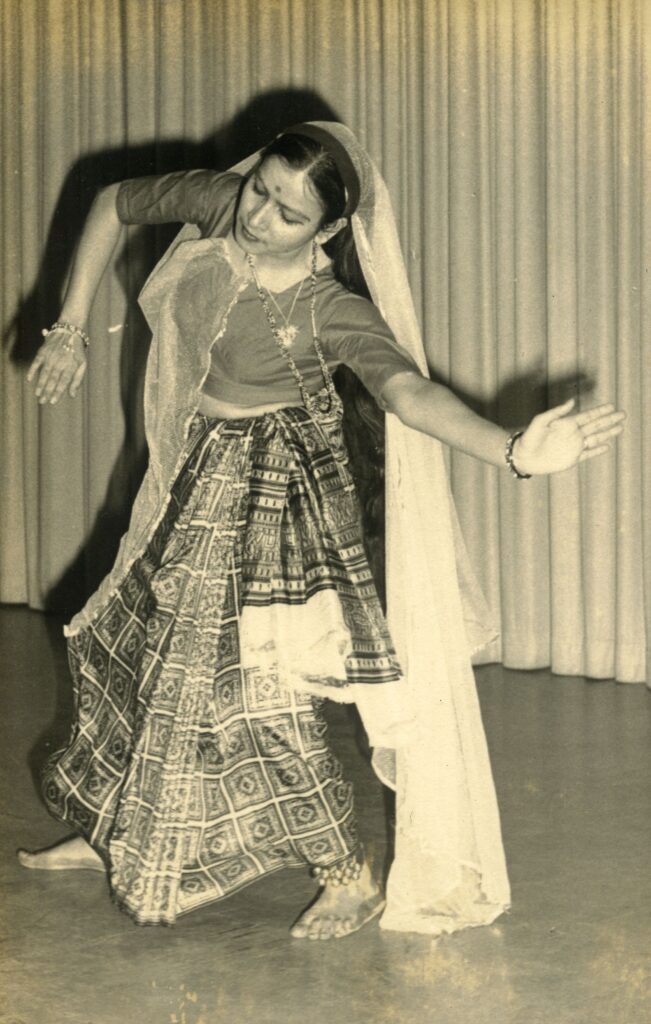









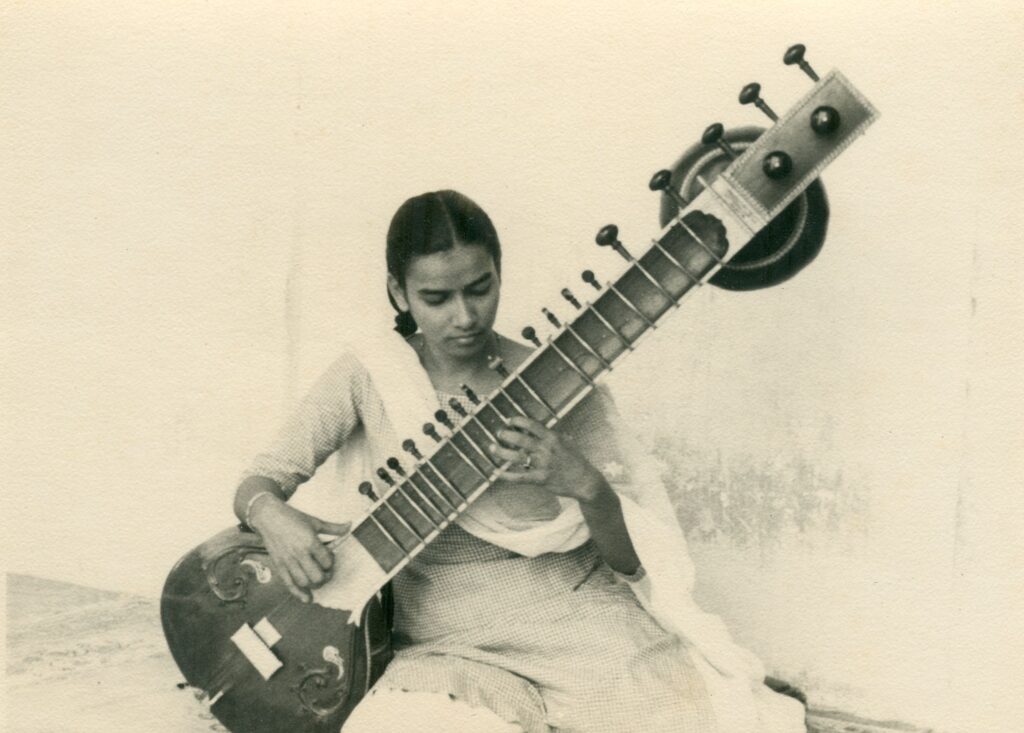


The Four Jauhar Sisters: Lata, Tara, Chitra and Purnima.
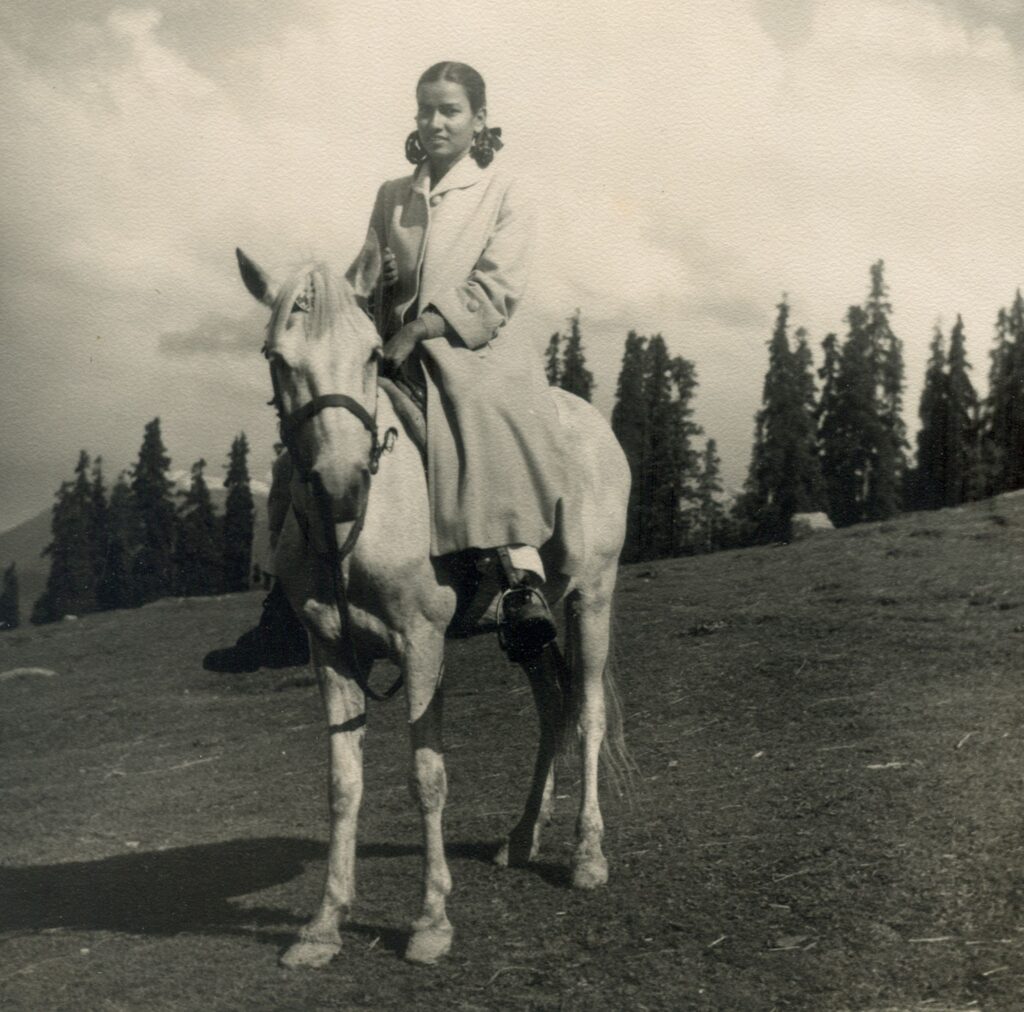

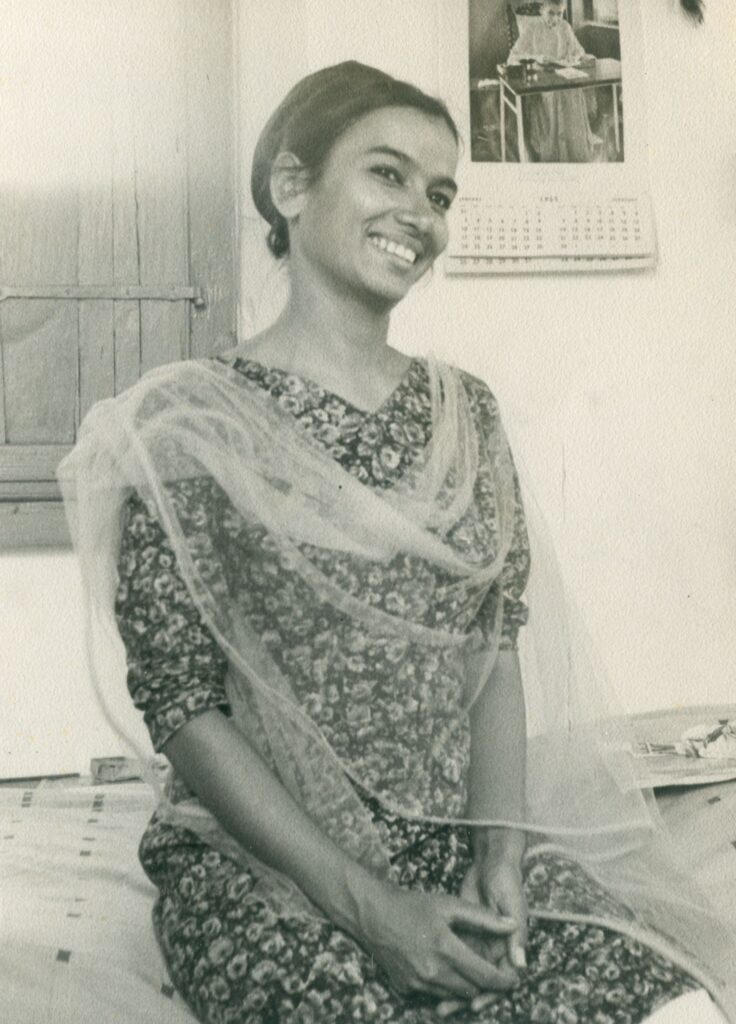








In the following two photographs, Lata Jauhar is seen with Debkumar Sarkar (son of Sudhir Kumar Sarkar and younger brother of Mona Sarkar) and Antje, wife of Werner Haubrich who was renamed Saumitra by the Mother. The child’s name was Hartmut.

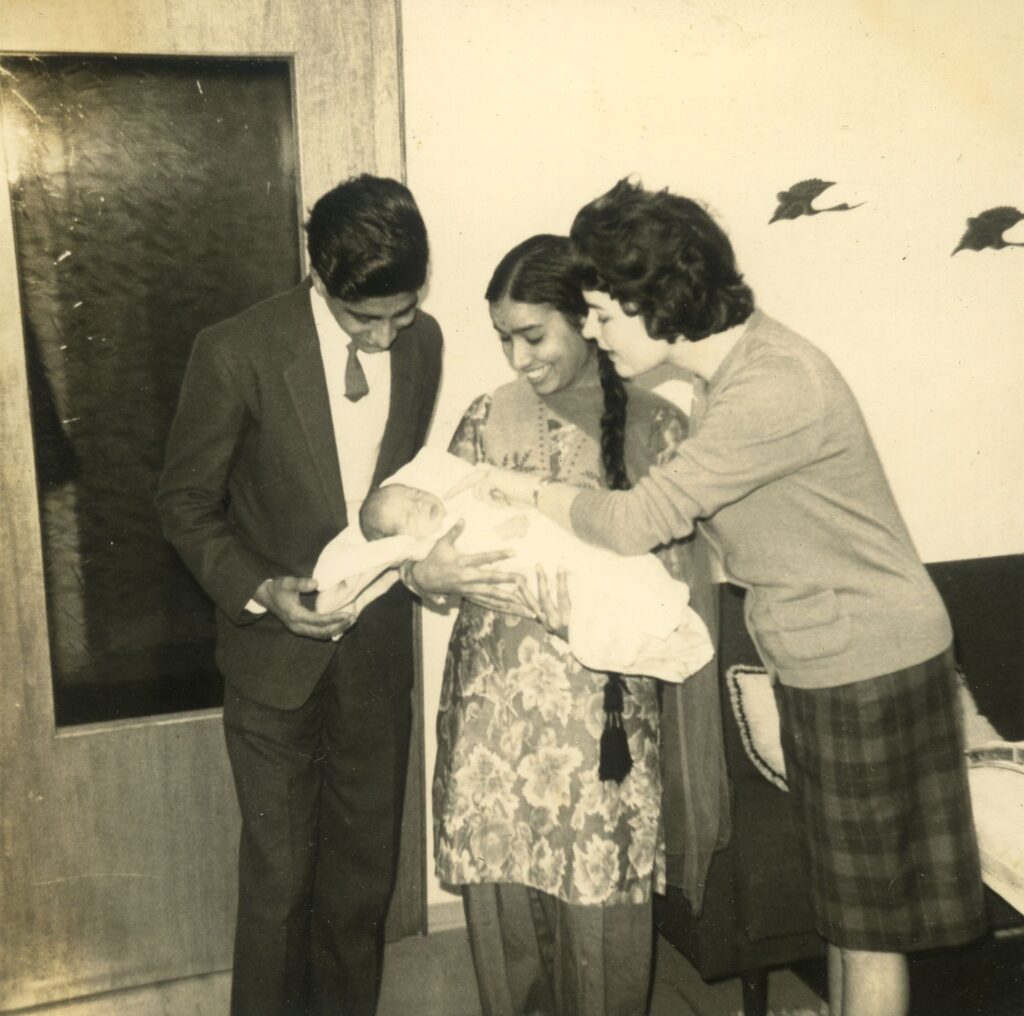
In the following two photographs, Lata Jauhar is seen with Francoise alias Pournaprema (the Mother’s granddaughter).



Suprabha Nahar, Tara Jauhar and Lata Jauhar.

Same as above.

Suprabha Nahar and Lata Jauhar.



The following are group photographs of the Jauhar Family: Surendranath, Dayawati, Anil, Narendra, Jitendra, Lata, Tara, Chitra, Purnima, Promesse and Victor.
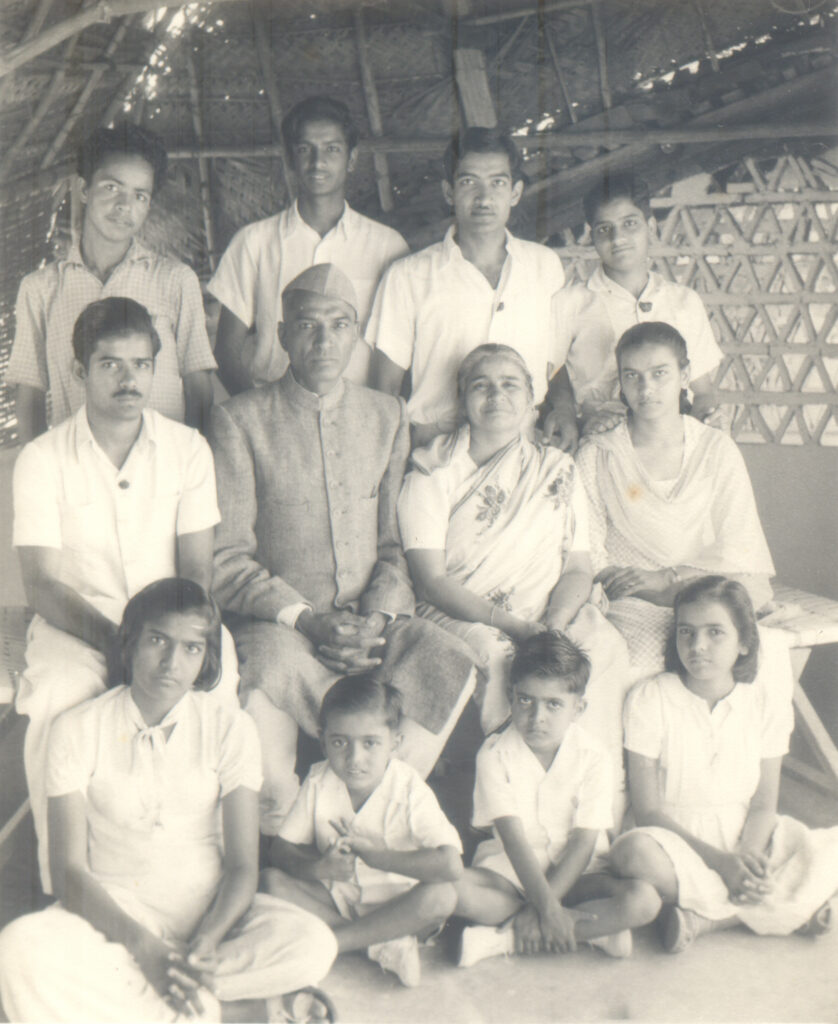





Lata with Surendranath Jauhar.

Lata with her parents Surendranath and Dayawati and sisters: Chitra and Purnima.

Lata with her parents Surendranath and Dayawati Jauhar.
In the following two photographs, Lata is seen with Surendranath Jauhar, sisters, Tara and Chitra Jauhar and brothers Promesse and Victor Jauhar.



Lata and Tara Jauhar.

Surendranath Jauhar with his wife Dayawati and daughters: (from left to right) Purnima, Chitra, Lata and Tara.




Surendranath Jauhar with Dayawati, Lata and Tara Jauhar.

Lata with Surendranath Jauhar in front of ‘Daya Niwas’, the Jauhars’ residence in Pondicherry.


In the following three group photographs, Lata Jauhar can be seen with André Morisset (the Mother’s son), his wife Wanda, Guru Nitya Chaitanya Yati, Surendranath Jauhar and Tara Jauhar at the Delhi Branch of Sri Aurobindo Ashram.


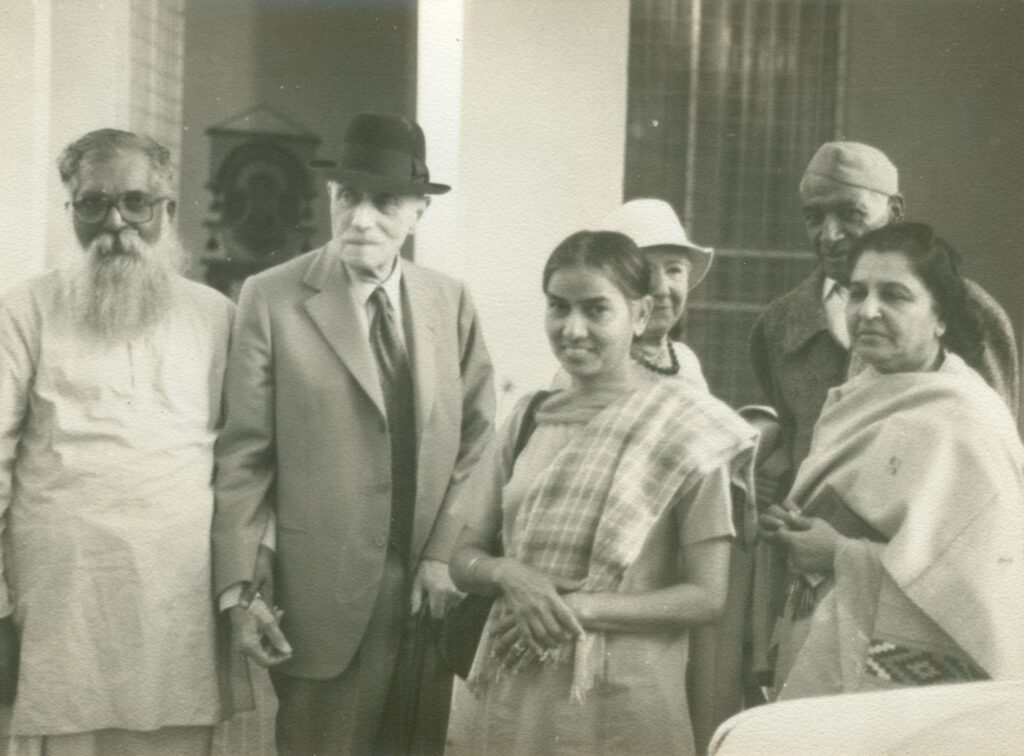

Lata Jauhar with Tara Jauhar, Vasudha Shah, and Meenakshi (wife of Doraiswami Iyer).

Lata Jauhar with Champaklal.

Same as above.
In the following two photographs, Lata is seen with Surendranath Jauhar and Tara Jauhar.


In the following photographs taken on 26 May 1989, Lata is seen with Dayawati Jauhar, Paru Patil, Manoj Dasgupta, Dr. Aster Patel and others. The sacred relics of Sri Aurobindo were being taken for enshrinement at Van Niwas in Nainital.







In the following photographs, Lata is seen with Dyuman, Tapati Dasgupta, Arati Dasgupta and her other friends.




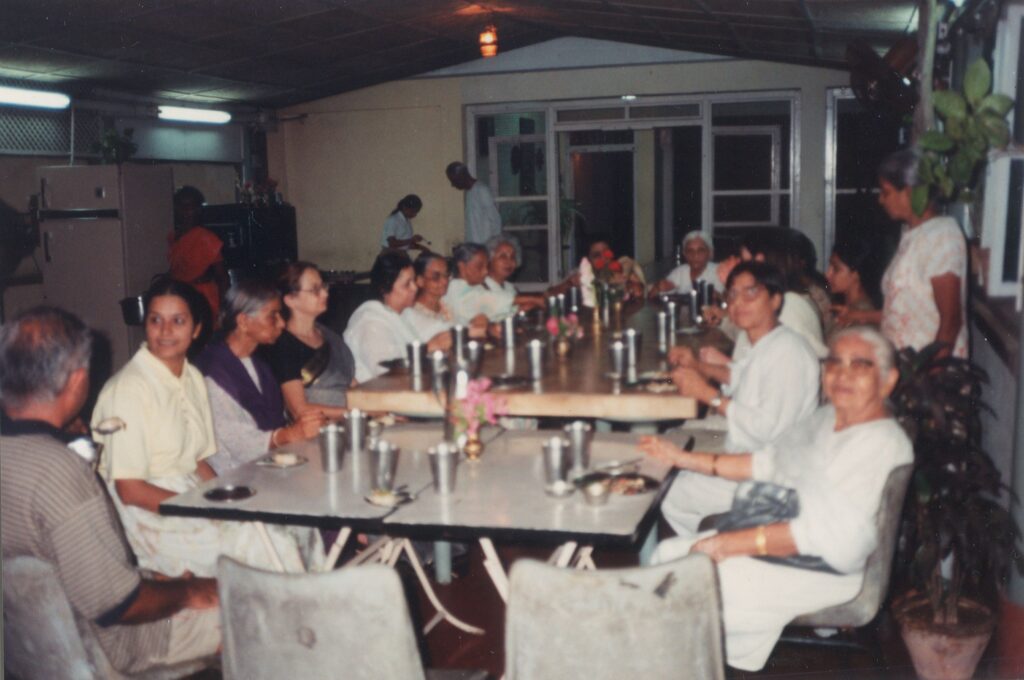
Lata with Tara Jauhar, Gauri Pinto, Dr. Aster Patel and others at a dinner get-together.

Lata with her younger sister, Chitra.

Lata with Mona Pinto.


Lata with Usharani Chakravarti, Ratna Chakravarti and Krishna Chakravarti.

Lata Jauhar with Gauri Pinto and Twinky.

Lata with Bibha Biswas, sister of Sanjivan Biswas.

Lata Jauhar with Vishweshwar and Kanak Ganguli.

Lata Jauhar and Gauri Pinto.

Lata Jauhar and Gauri Pinto.

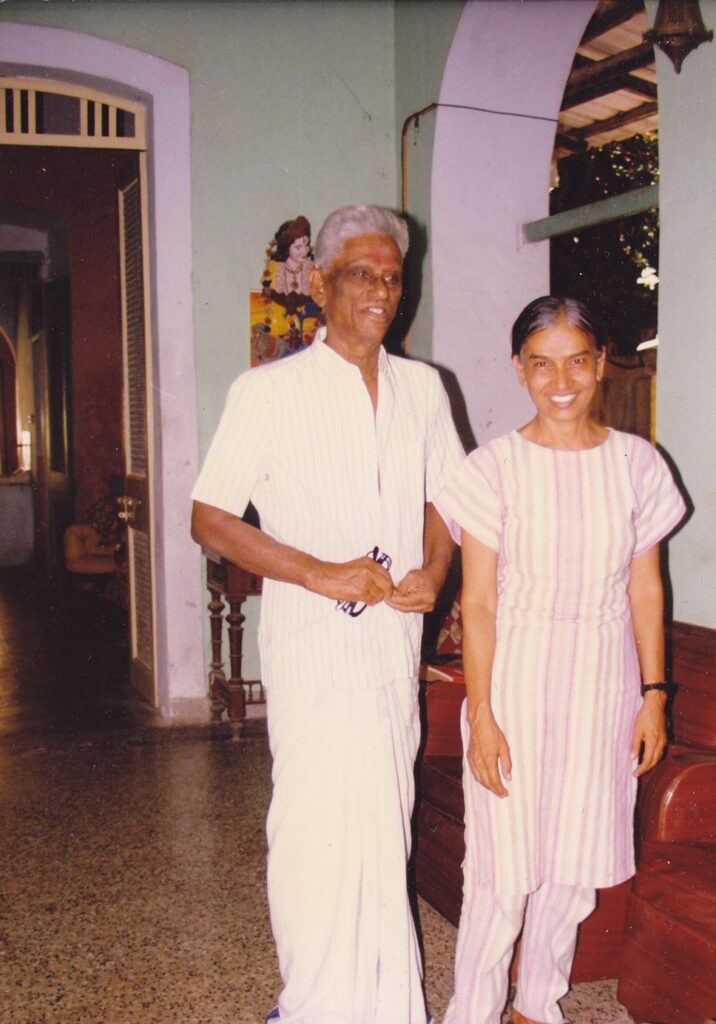
Lata Jauhar with Dr. Corot.

Lata Jauhar, Vilas Patel, Jhumi and Maria.

From left to right: Sutapa, Ray and Lata Jauhar.

Sutapa, Urmila and Lata.

The photo above was taken sometime in 1947 with the early boarders of Dortoir. Standing Row: Lata jauhar, Anu Ben Purani (warden) Kusumben Nagda (warden), Paru Patil, Urmila R Patel. Middle Row: Aruna Pandya, Tara Jauhar, Usha R Patel. Sitting Row: Kokila Pandya, Chitra Jauhar, Sumedha, Purnima Jauhar.

Group photograph taken on the occasion of Dortoir’s Fiftieth Anniversary on 15 January 1995 with the early boarders of Dortoir seated and standing in the same position as in the photograph taken in 1947.

From right to left: Paru Patil, Usha, Lata Jauhar, Lilou, Tapati Dasgupta, Urmila and Anju.





Lata and Tara Jauhar.

Lata with her brothers Anil, Jitendra and Promesse and sisters Tara, Chitra and Purnima.

Tara Jauhar, Lata Jauhar and Anil Jauhar.

Lata and Tara Jauhar with devotees from Russia.

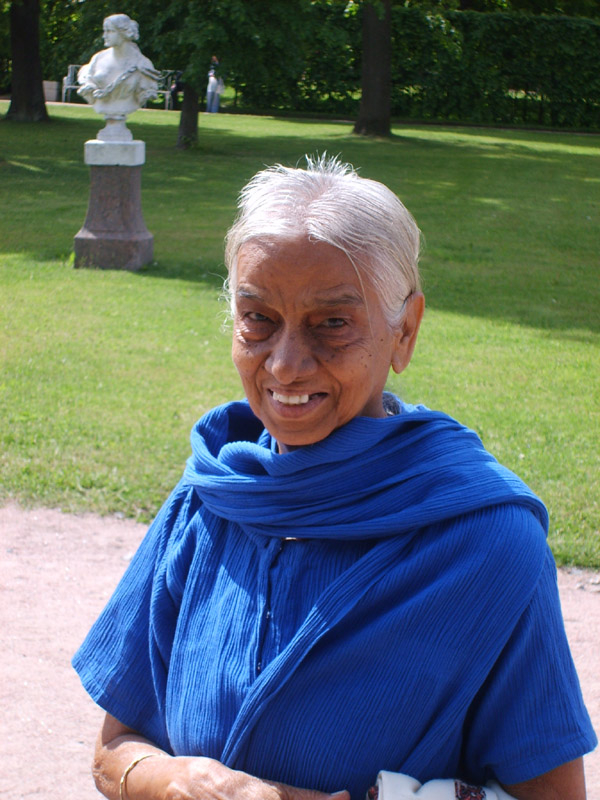
In the following two photographs, Lata and Tara Jauhar are seen at the Moscow Centre.




Tara and Lata Jauhar.


Lata, Chitra and Tara Jauhar at Kechla, Odisha.

Lata Jauhar and Arati Dasgupta.

Group photograph taken on 1 December 2012 on the occasion of Noren Singh Nahar’s ninety-second birthday. From left to right: Indu Rai, Achyut Patel, Lata Jauhar, Anurag Banerjee, Sushilaben, Noren Singh Nahar and Suprabha Nahar.
The following photographs were taken during the enshrinement of Sri Aurobindo’s sacred relics at Madhuban in Talla Ramgarh in June 2014. Also seen in these photograph with Lata Jauhar are Manoj Das, Dr. Ananda Reddy, Tara Jauhar and Dr. Aster Patel.











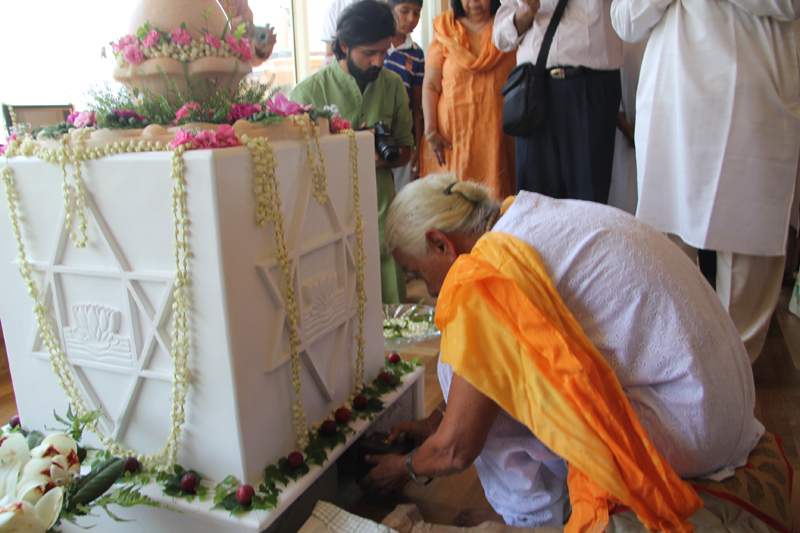
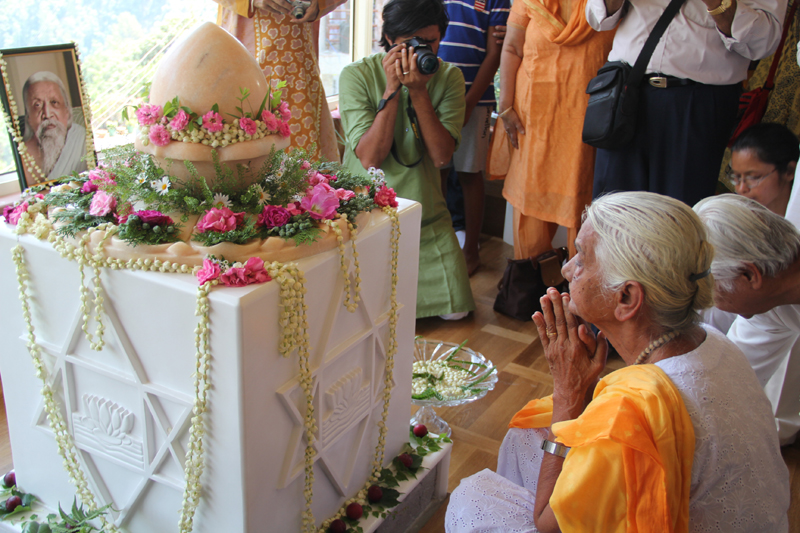









Lata Jauhar, Vilas Patel and Tara Jauhar.


Lata, Tara and Chitra Jauhar in front of Dakshineswar Temple, West Bengal.
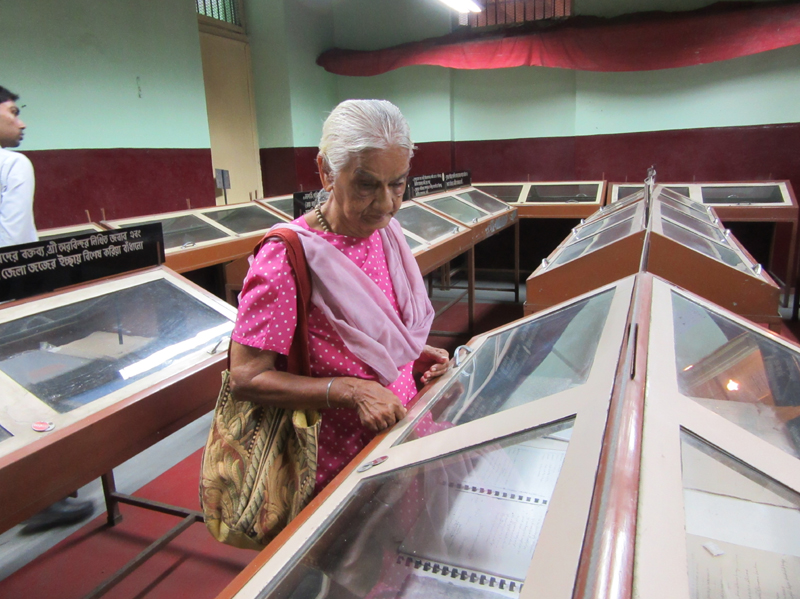
Lata Jauhar at the Alipore Bomb Trial Museum, Kolkata.

Lata and Tara Jauhar at the residence of Bankim Chandra Chattopadhyay, the author of ‘Bande Mataram’.

Lata and Tara Jauhar at the residence of Motilal Roy, the founder of Prabartak Sangha at Chandernagore.

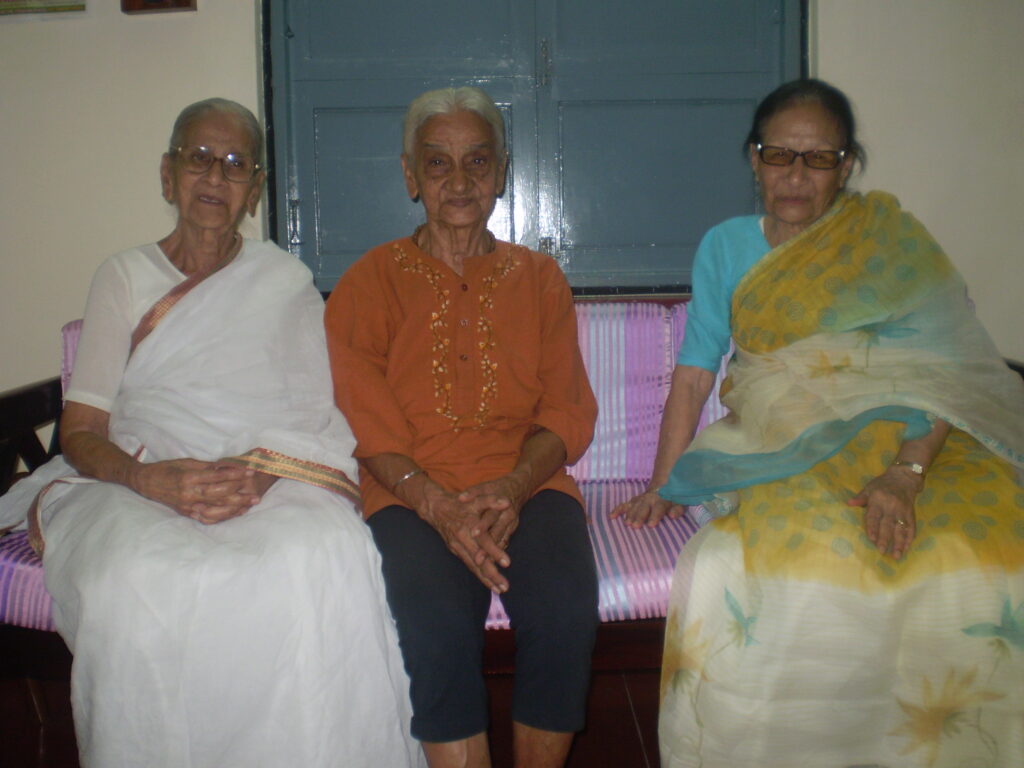
Three friends: Suprabha Nahar, Lata Jauhar and Sumitra Nahar in December 2016.

Suprabha Nahar, Lata Jauhar, Anurag Banerjee and Sumitra Nahar.
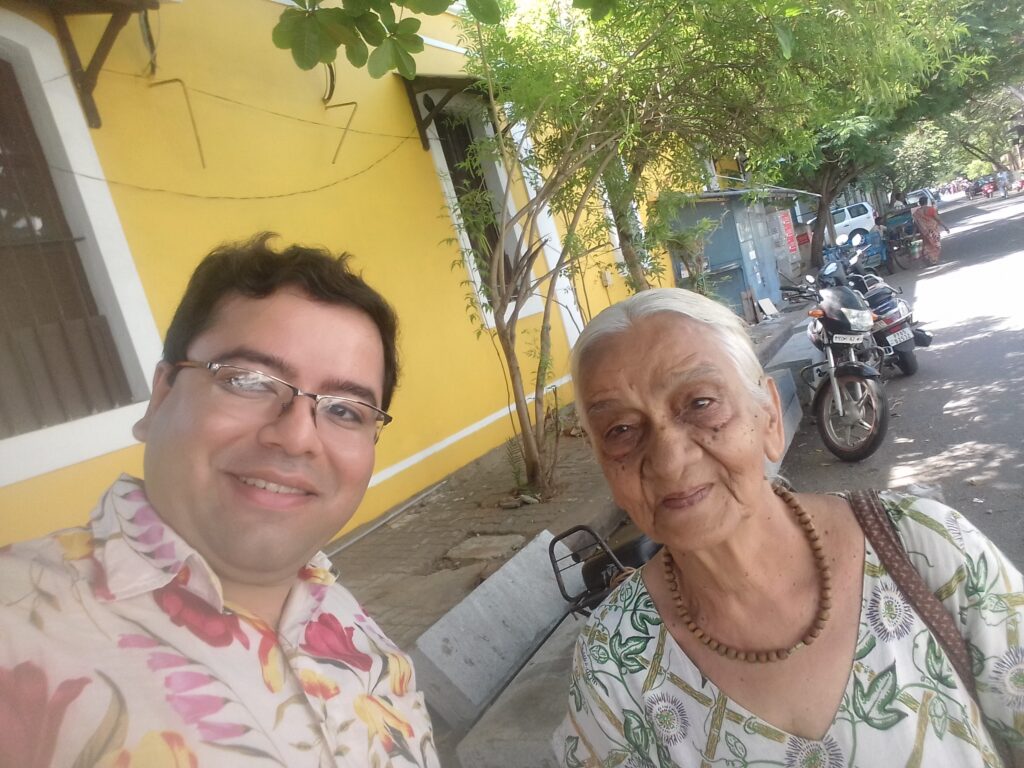
Lata Jauhar with Anurag Banerjee on 11 March 2019.

Lata Jauhar, Tara Jauhar, Priti Ghosh and Chitra Jauhar.










Three friends: Lata Jauhar, Suprabha Nahar and Urmila.
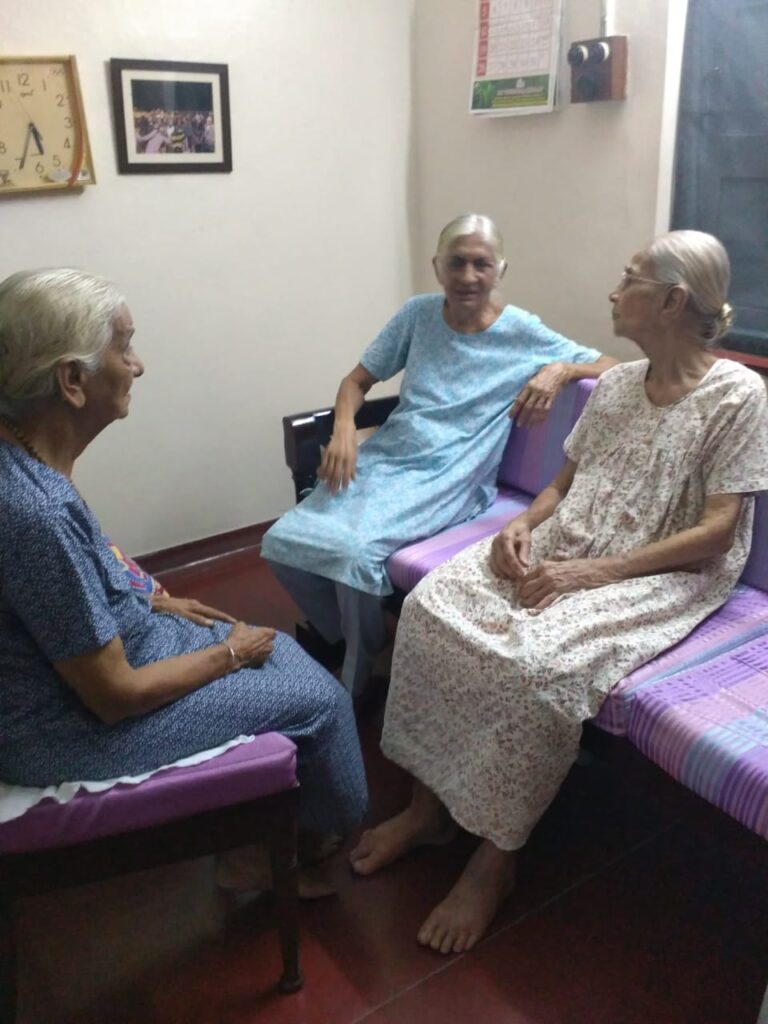
Same as above.

Same as above.


Thank you Anurag for letting us have glimpses of the unknown dimensions of an iceberg so well known to us.
My sincere Pranaams to the Soul of Lata Jauhar jee, and pray Mother for the Soul’s rebirth in Ashram…🙏🌷
Thanks a lot for sharing.
जय श्रीमाँ !! वन्देमातरम!!
🙏🙏🙏🌹🌹
many many thanks Anurag ji !
Heartfelt thanks for the lovely and rare photographs and the fine article!
I had the honor of meeting Lata in July 1996 (I think it was in July that I traveled from Barcelona, Spain, to the ashram, encouraged by colleagues from the Sri Aurobindo Center of Barcelona). Three people from the Barcelona center got there, Vicente Merlo, his partner and me.
I can’t remember how the opportunity to meet Lata was given, but she invited me to attend as a spanish teacher with her students, and meet them.
Lata became, in fact, my hostess. I don’t recall meeting anyone else from the ashram.
A great woman, I’m sure a great yoga practitioner.
In the arms of God you are, dear Lata.
Thank you for this article and for all of the similar articles that have been posted here. They are wonderful glimpses of life at the Ashram.
…many many thanks Anurag.
May Latadi Rest In Peace .
I knew her since mid forties. In 1963, She visited me in Cologne and later in the seventies she came to Vinslöv .
It is so sad to know she left this world. She has been a great lady and an excellent Teacher of Spanish. She is in the Mother’s hands now.
Beautiful soul. Always smiling! Mother’s blessings.
Childhood friend
She was such a sweet soul when I met her in 1985. There is more light every where now.
Blessed life in the service of Sweet Mother and Aurobindo. May rest in peace on the lap of Sweet Mother
Thanks for sending the link, Anurag. Though I knew Latadi personally there are many facets of her personality of which I knew nothing. How beautifully you have paid your respect to such a lovely soul.
Ratna Lahiri
Your write-up on Latadi is tremendous. Congratulations
Dear Anurag Banerjee ji
Thanks a lot for sharing this beautiful post as a tribute to the legendary and great Lata Jauhar ji! You have described and presented the dedicated life of Lata Jauhar ji in such a wonderful way that it brings each event and incident to life. Your words enliven each moment that has been presented in the write-up. Lata ji’s life is a very beautiful example of dedication, devotion and selfless service. Having mastery in several languages is in itself a great accomplishment. Her contribution to the Ashram is remarkable. This write-up brings to light every aspect of the sagely life lived by the great Lata Jauhar ji. ‘Learning for the sake of learning’…this statement is so powerful that it motivates and inspires us to redirect and reassign our goals in life where we normally give more importance to the results and achievement rather than the real purpose of learning and growing.
I have penned a small poem inspired by Lata Jauhar ji’s powerful statement which I would like to share with you.
‘LEARNING FOR THE SAKE OF LEARNING’
The Divine hath chosen the path for us all
With the continual blessings showered upon the being
And the unflinching faith in the chosen path
Never shall the being be misled by the delirious desires
Nor befogged by the hazy illusions
Each step forward towards the Light Divine
Eager to surrender with cheer, love abound
The impediments arising in the journey though
But the faith, the belief brighten up the way
The hurdles thus a milestone firm
The zealous passionate desire to learn
At every step of life becomes
The shining light enlightening the path
That sparkles in the heart so pure, so serene
Opening the inner depths of the soul
Towards the illuminating source of peace and charm
The mind opened, the vision broadened
Welcomes the serene, tranquil, illumining Light
A life full-lived, as a blossomed bloom
With open arms embracing the ever-loving Divine
Ignorance shed as the autumn leaves
The enlightened mind and the soul when cheer
Evanescing the distress, dispelling all fears
The Divine hath chosen the path for us all
Which we, the learners, humbly tread
Armoured with faith and trust and surrender
Seeking the blessings and the Bliss Ultimate!
Regards
Giti Tyagi
(Editor, International Author & Poetess, Creative Artist,
Book Reviewer, Translator)
Thanks a lot for sharing.
I will miss her on the street where i saw her almost everyday.
What a treasure trove! A beautiful story of a lovely lady! Was blessed to know her even though briefly.